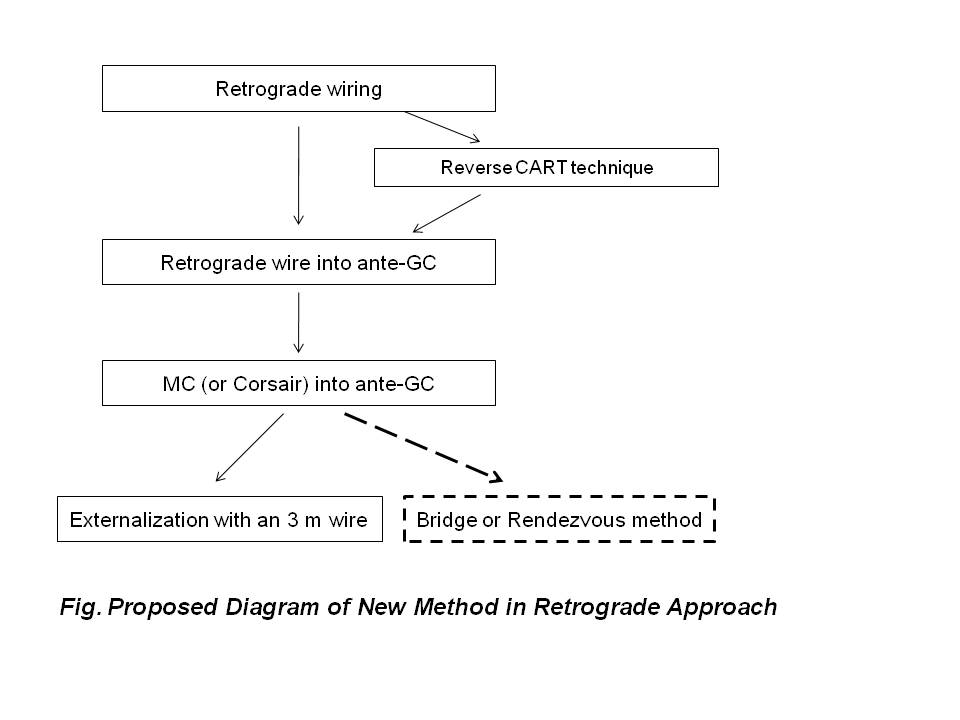| єя«•«ьљƒ : ∆чљЇ≈Ќ
|
ЅҐЉцєш»£ - 540254 235 |
| Experience with a novel retrograde wiring technique for coronary chronic total occlusion |
| лПЩмХДлМАнХЩкµР мЭШк≥ЉлМАнХЩ мИЬнЩШкЄ∞лВік≥Љ ¬є , лґАмВ∞лМАнХЩкµР мЭШк≥ЉлМАнХЩ мИЬнЩШкЄ∞лВік≥Љ¬≤, Kurashiki Central Hospital¬≥ |
| мЦіл£°нШЄ¬є, кєАлђінШД¬є , м∞®кіСмИШ¬≤ , м°∞мЪ©лЭљ¬є , л∞±нЭђк≤љ¬є , мЮ•нЩНм≤†¬є , л∞ХнГЬнШЄ¬є , кєАмШБлМА¬є , Kazuaki Mitsudo¬≥ |
Background and Objectives: To improve the success rate of recanalization of coronary chronic total occlusion (CTO), different strategies of retrograde approach were introduced in recent years. We sought to describe our experience about a novel retrograde wiring technique called as вАЬBridge or Rendezvous methodвАЭ. Subjects and Methods: From July 2007 to May 2010, 18 patients were treated with this technique in two medical centers according to a standard retrograde wiring approach. This technique was applied immediately after a retrograde guidewire and microcatheter (or Corsair) successfully crossed through the donor occluded site into antegrade guiding catheter via the proximal true lumen. Because the duration of time and attempts into successful wiring was difficult to measure, we had evaluated procedural success rate and procedura time with non-fluoroscopic and fluoroscopic model using transparent tube filled with liquid. Results: Mean age of the patients was 59.2¬±9.8 years. The majority of occlusion sites were proximal right coronary artery (55.5%). Most of the lesions had mild to moderate calcification (83.3%) and revealed abrupt stump with side branch at the occlusion site. The lesion length of the occlusion was relatively long (median 21.0 mm; rage of 7.1 to 87.4 mm). The success rate was 94.4% without any complications. No adverse cardiac events occurred during hospitalization. In experimental model, procedural time was short (mostly within 30 seconds) and success rate was 80% at straight sites and 100% at curved sites in guiding catheter. Conclusions: The Bridge or Rendezvous method for CTO is feasible and safe, with advantage of being able to cross the occluded site antegradely, especially for a long or dissected CTO lesion, minimizing the possibility of dissections and the guidewire in false lumen at the occlusion site. Therefore, we propose this method as an alternative approach to conventional externalization method (Figure). Key words: Chronic total occlusion, Percutaneous coronary intervention, Coronary collaterals
|
|
|
Warning: getimagesize(/home/virtual/circulationadmin/renewal/econgress/conference/abstract/img_files/Bridgemethod.jpg) [function.getimagesize]: failed to open stream: No such file or directory in /home/virtual/circulationadmin/new/econgress/conference/manage/schedule/view_abstract.php on line 164

|
|





